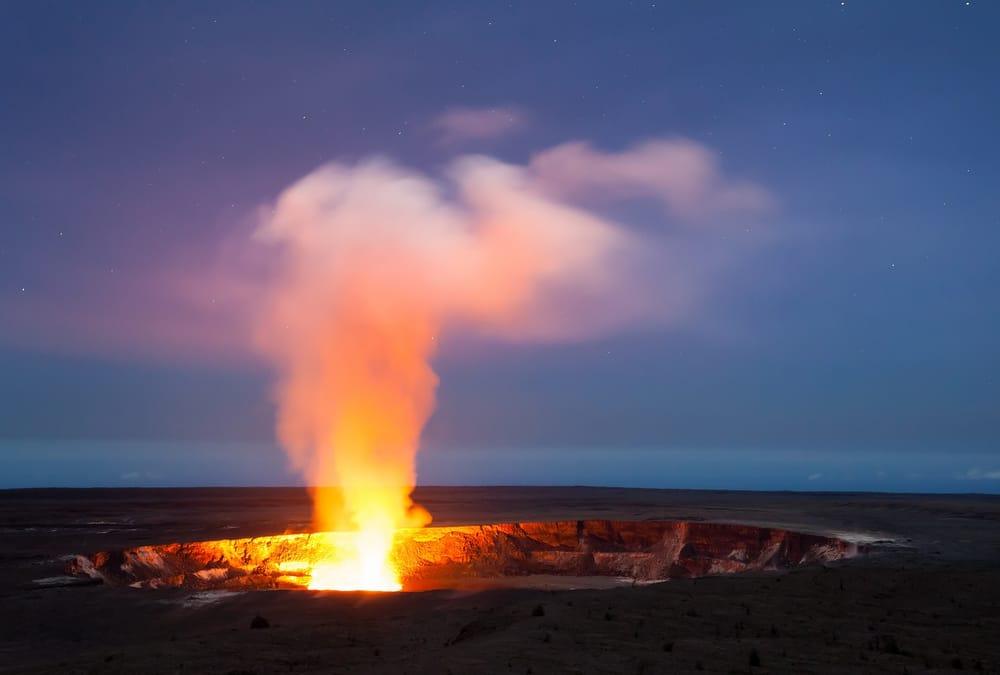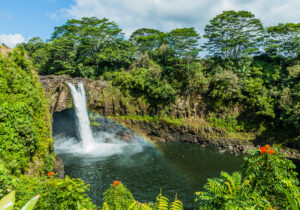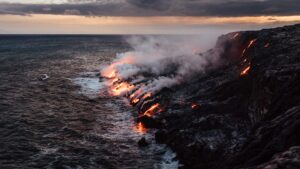Our volcano tours are the best way to see the volcano in comfort and luxury. The U.S. Geological Survey on the latest on volcanic activity for Kilauea as of March 21.
HawaiʻiAN VOLCANO OBSERVATORY DAILY UPDATE
U.S. Geological Survey
Monday, March 21, 2022, 8:25 AM HST (Monday, March 21, 2022, 18:25 UTC)
KILAUEA VOLCANO (VNUM #332010)
19°25’16” N 155°17’13” W, Summit Elevation 4091 ft (1247 m)
Current Volcano Alert Level: WATCH
Current Aviation Color Code: ORANGE
Activity Summary: The summit eruption of Kīlauea Volcano, within Halemaʻumaʻu crater, continued over the past 24 hours, with continuous effusion of lava into and lava circulation within the active lava lake area. There have been occasional oozeouts along the crater floor margin. All recent activity has been confined to the crater, and there are no indications of activity migrating elsewhere on Kīlauea.
Halemaʻumaʻu Lava Lake Observations: Eruption of lava from the western vent into the active lava lake surface (approximately 2.5% of Halemaʻumaʻu crater floor) continued over the past 24 hours, with continuous effusion of lava into and lava circulation within the active lava lake area. There have been occasional oozeouts along the crater floor margin. As measured on March 17, 2022, the erupted volume is 57.7 million cubic meters (75.5 million cubic yards) of lava, and the average (median) crater floor elevation has risen 89 meters (292 feet) since the eruption began on September 29, 2021.
Summit Observations: Summit tiltmeters recorded no inflation or deflation over the past 24 hours. Seismic data shows that the volcanic tremor was above background levels. A sulfur dioxide (SO2) emission rate of approximately 1900 tonnes per day (t/d) was measured on March 10.
Rift Zone Observations: No unusual activity has been noted along the East Rift Zone or Southwest Rift Zone; low rates of ground deformation and seismicity continue along both. Measurements from continuous gas monitoring stations downwind of Puʻuʻōʻō in the middle East Rift Zone remain below detection limits for SO2, indicating that SO2 emissions from Puʻuʻōʻō are negligible.
Hazard Analysis: This eruption at Kīlauea’s summit is occurring within a closed area of Hawaiʻi Volcanoes National Park. Therefore, high levels of volcanic gas are the primary hazard of concern, as this hazard can have far-reaching effects downwind. Large amounts of volcanic gas—primarily water vapor (H2O), carbon dioxide (CO2), and sulfur dioxide (SO2)—are continuously released during eruptions of Kīlauea volcano. As SO2 is released from the summit, it reacts in the atmosphere to create the visible haze known as vog (volcanic smog) that has been observed downwind of Kīlauea. Vog creates the potential for airborne health hazards to residents and visitors, damages agricultural crops and other plants, and affects livestock. For more information on gas hazards at the summit of Kīlauea, please see: https://pubs.er.usgs.gov/publication/fs20173017. Vog information can be found at https://vog.ivhhn.org.
Additional hazards include Pele’s hair and other lightweight volcanic glass fragments from lava fountains that will fall downwind and dust the ground within a few hundred meters (yards) of the erupting fissure vent(s). Strong winds may waft lighter particles to greater distances. Residents should minimize exposure to these volcanic particles, which can cause skin and eye irritation.
Other significant hazards also remain around Kīlauea caldera from Halemaʻumaʻu crater wall instability, ground cracking, and rockfalls that can be enhanced by earthquakes within the area closed to the public. This underscores the extremely hazardous nature of the rim surrounding Halemaʻumaʻu crater, an area that has been closed to the public since early 2008.
For discussion of Kīlauea hazards, please see: https://www.usgs.gov/observatories/Hawaiʻian-volcano-observatory/hazards.
Please see the Hawaiʻi Volcanoes National Park website for visitor information: https://www.nps.gov/havo/index.htm. Visitors to Hawaiʻi Volcanoes National Park should note that under southerly (non-trade) wind conditions, there is potential for a dusting of powdery to gritty ash composed of volcanic glass and rock fragments. These ashfalls represent a minor hazard, but visitors should be aware that such dustings at areas around the Kīlauea summit are possible.
The Hawaiʻian Volcano Observatory (HVO) continues to closely monitor Kīlauea volcano.
HVO will continue to issue daily Kīlauea volcano updates until further notice. Additional messages will be issued as needed.
In addition to the morning Kīlauea Daily Update, HVO will issue a brief eruption “Status Report” around 3 p.m. HST daily due to frequent pauses in the eruption and the highly variable nature of the lava lake activity within Halema‘uma‘u crater. The addition of afternoon status reports does not reflect a change in hazards; these reports are intended to give Hawaiʻi Volcanoes National Park staff and visitors an idea of likely lava activity for the coming evening.
Volcano Notification Service subscribers may need to update their subscription settings in order to receive the afternoon Kīlauea Status Reports: https://volcanoes.usgs.gov/vns2/. Please contact [email protected] with questions.





